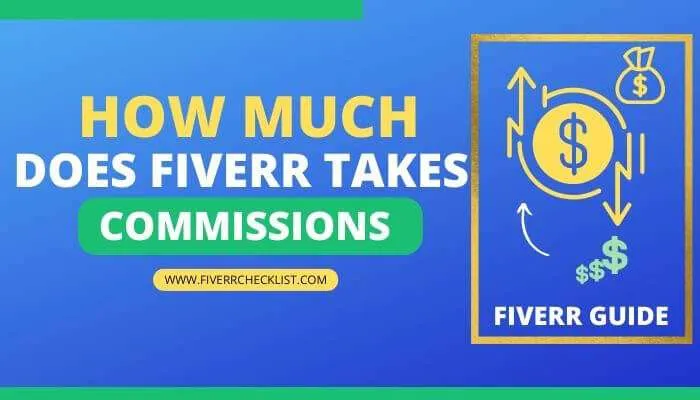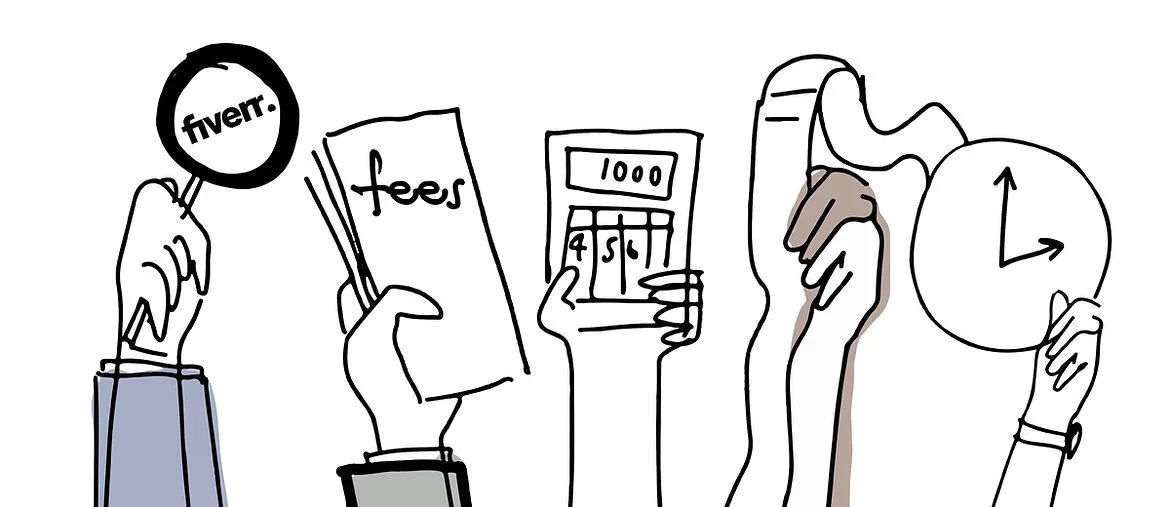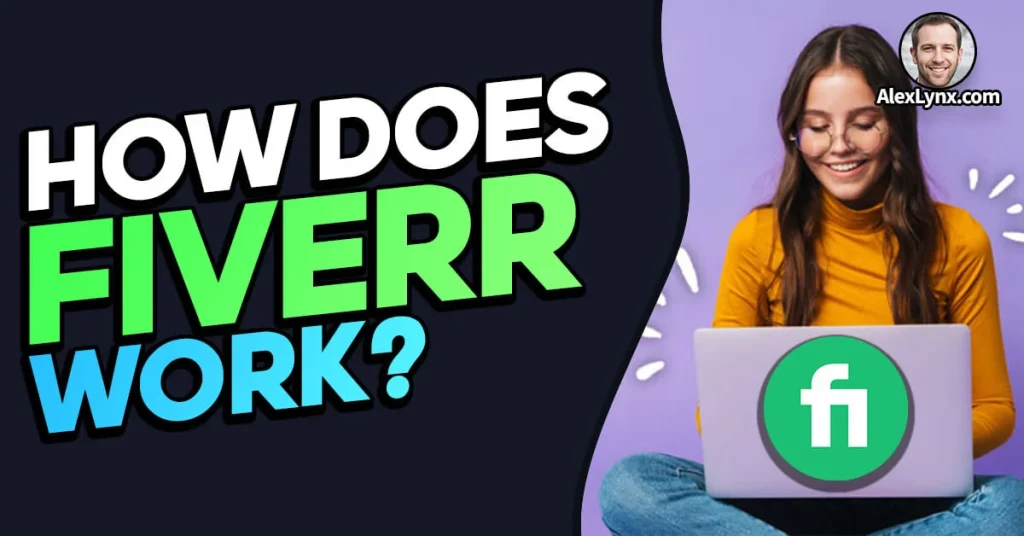If you've landed on this page, you’re probably curious about how Fiverr operates and what fees you can expect when using its platform. Whether you’re a freelancer looking to sell your services or a buyer searching for affordable options, understanding Fiverr's fee structure is crucial. This guide will walk you through everything you need to know about Fiverr's fees in 2019, ensuring that you're well-informed before diving in!
Understanding Fiverr's Fee Structure

Fiverr has developed a reputation as a go-to platform for freelancers and businesses alike, but what exactly does it cost to use the site? Here's a clear breakdown of Fiverr's fee structure so you know what to expect:
- Service Fee (For Buyers): When you place an order on Fiverr, there's a service fee added to the cost. This fee varies depending on the order value:
- For orders under $40: $2
- For orders over $40: 5% of the total order price
- Seller Fees: For freelancers (sellers) who complete jobs on Fiverr, there’s also a fee taken from your earnings:
- Fiverr takes a flat 20% from each transaction. So if you sell a service for $100, you’ll receive $80.
- Bank Withdrawal Fees: When you’re ready to withdraw your earnings, keep in mind that some payment methods may carry their own fees. For instance:
- PayPal transactions may incur fees depending on your region.
- Bank transfers may have varying fees based on the bank policies.
Keep in mind that these fees help Fiverr maintain its platform, providing security and ensuring you have a user-friendly experience. Always budget accordingly to factor in these costs and maximize your profit as a freelancer or prepare for additional expenses as a buyer.
Also Read This: Do You Tip for Logo Design on Fiverr?
3. Service Fees for Sellers

As a seller on Fiverr, it's important to understand how the platform's service fees work. These fees are a key part of your earnings and can impact how much money you take home at the end of the day. So, let’s break it down!
Fiverr typically takes a 20% commission from each transaction you complete. This means, if you sell a gig for $100, Fiverr keeps $20, and you are left with $80. While this might sound steep, keep in mind that Fiverr offers a user-friendly platform with a vast audience that can help you grow your business.
Here’s a simple breakdown:
| Gig Price | Fiverr's Cut (20%) | Your Earnings |
|---|---|---|
| $10 | $2 | $8 |
| $50 | $10 | $40 |
| $100 | $20 | $80 |
It’s worth noting that this fee structure also applies to any add-ons or extra services you offer. So, if you upsell a client on additional features, Fiverr will still take their standard 20% cut from those sales as well.
Understanding these fees is crucial for setting competitive prices for your gigs. With the right pricing strategy, you can maximize your earnings while still providing quality services to your clients.
Also Read This: How to Create Packages on Fiverr
4. Buyer Service Fees Explained

Fiverr’s service fees aren’t just relevant for sellers; buyers also have a little something to consider! When you purchase a gig on Fiverr, you’ll notice an additional service fee added to the total cost. But what exactly does this fee cover?
The buyer service fee helps maintain the platform and provides you with certain protections. This fee typically ranges from $2 to $40, depending on the order price. Here’s an overview of how it works:
For example:
| Order Price | Service Fee |
|---|---|
| Up to $40 | $2 |
| $40 to $100 | $2 + 5% of the order price |
| Above $100 | $5 + 5% of the order price |
This fee contributes to the seamless experience offered by Fiverr, which includes customer support, payment processing, and an overall secure transaction environment.
While some buyers might be put off by these fees, it’s worth considering the value you receive in return. Fiverr provides a vast selection of talented freelancers at your fingertips, with the safeguards in place to ensure a smooth transaction.
In conclusion, understanding both seller and buyer service fees on Fiverr can help you navigate the platform more effectively and make the most out of your experience—whether buying or selling!
Also Read This: What is Fiverr Clone?
How Fiverr's Fees Compare to Other Freelance Platforms
When it comes to choosing a freelance platform, understanding the fees involved is crucial. Fiverr has carved out its niche with a simple and transparent fee structure, but how does it measure up against other freelancing sites? Let’s break it down!
Fiverr typically charges a 20% service fee on each order, which applies to both sellers and buyers. For example, if a seller completes a project for $100, Fiverr takes $20, leaving the seller with $80. Now, let's compare this with the fees on some other popular platforms:
| Platform | Service Fee | Payment Method Fees |
|---|---|---|
| Fiverr | 20% | Varies, typically around 3% |
| Upwork | 20% for first $500, 10% for $500-$10,000, 5% for over $10,000 | Varies (can be up to 2.75%) |
| Freelancer | 10% or $5 (whichever is greater) | Varies, typically 3% |
As you can see, Fiverr's flat 20% fee is straightforward but can be a bit steep compared to some tiered systems like Upwork. However, some sellers appreciate not having to worry about their earnings fluctuating based on project size, which makes Fiverr attractive for many.
Also Read This: How to Download Your Video from Fiverr: A Step-by-Step Guide
Impact of Fiverr Fees on Seller Earnings
The fees that Fiverr charges can significantly impact the take-home pay for sellers. Let’s take an honest look at how these fees influence earnings and what sellers can do to mitigate their effects.
First off, it's essential to recognize that the 20% service fee is applied to every order, which means that if you’re a seller pricing your services competitively, this deduction can cut into your profits substantially. For instance, if you offer a gig at $50, here’s how your earnings break down after Fiverr's cut:
- Initial Gig Price: $50
- Fiverr's Fee (20%): $10
- Your Earnings: $40
It's clear that sellers must consider this when setting their prices to ensure that the commission doesn't kill their revenue. Additionally, here are a few strategies sellers can employ:
- Set Competitive Prices: Research similar gigs to find a balance between competitiveness and profitability.
- Upsell Services: Create package deals or add-ons to increase the total order value.
- Build a Loyal Clientele: Repeat clients can help ensure consistent earnings and reduce the impact of fees over time.
In summary, while Fiverr’s fees are a reality for sellers, being strategic about pricing and offering value can help offset these costs and enhance overall earnings.
Also Read This: 2024’s Best Fiverr Gigs for Creative Services
Tips for Maximizing Earnings on Fiverr Despite the Fees
So, you’ve set up your Fiverr gig and are ready to dive into the freelance marketplace. But wait, let’s talk strategy! While Fiverr does take a cut from your earnings, there are several savvy approaches you can use to enhance your income. Here are some handy tips to consider:
- Choose the Right Gig: Focus on what you are skilled at and where there’s demand. Research trending categories to identify what buyers are looking for.
- Optimize Your Profile: Use keywords in your profile and gig description. This will boost your chances of being found in searches. Remember, first impressions count!
- Set Competitive Prices: Initially, consider pricing your services lower to attract more customers. Once you build a reputation and gather reviews, you can gradually increase your rates.
- Offer Packages: Create tiered pricing options (basic, standard, premium) for your services. This allows clients to choose what fits their budget and needs.
- Deliver Quality Work: Never compromise on quality. Happy clients mean repeat business and positive reviews, which are invaluable on Fiverr.
- Utilize Promotions: Use Fiverr’s promotional tools, like Fiverr Ads, to gain visibility and drive traffic to your gigs.
- Encourage Repeat Business: Foster relationships with your clients. Encourage them to come back for more services, which helps reduce the cost of acquiring new customers.
Remember, while Fiverr's fees might seem significant at first glance, by employing these strategies, you can maximize your earnings and make the most of your freelancing journey.
Conclusion: Navigating Fiverr's Costs in 2019
Navigating the world of Fiverr can feel a bit overwhelming, especially when you start considering the fees involved. In 2019, understanding these costs is essential for any freelancer aiming to thrive on the platform. Here’s a quick recap:
- Fiverr's Commission Structure: Fiverr takes a 20% commission on sales, which means if you charge $100, you walk away with $80.
- Payment Processing Fees: Depending on the method of payment you choose, additional processing fees may apply.
- Tip on Earnings Management: Keep a close eye on your earnings and expenses. Maintaining a monthly budget can give you a clearer picture of your profits.
While the fees can reduce your earnings, remember that Fiverr provides you with access to a global marketplace, advertising for your services, and a platform to connect with countless potential clients. By being strategic about your gigs, relationships, and pricing, you can successfully navigate these costs.
At the end of the day, your focus should be on delivering value to your clients and building a strong presence on Fiverr. So go ahead, craft those gigs and get ready to take your freelancing to the next level!



